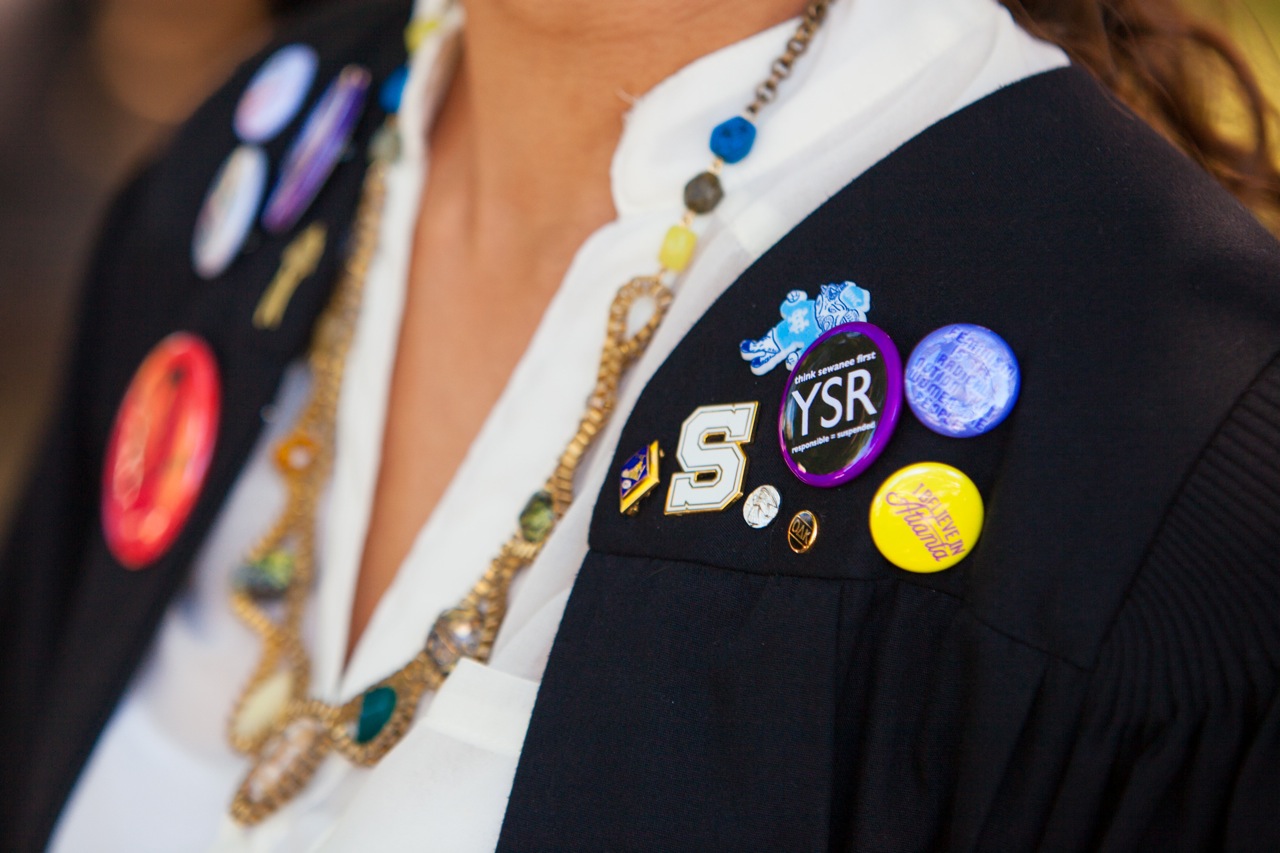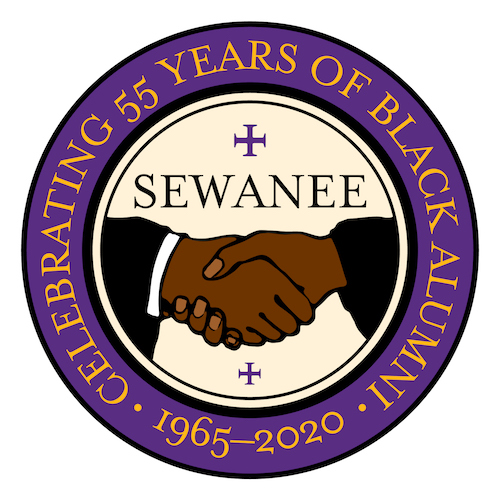
While the Black Lives Matter Movement may have been thrust onto the national and international stage this past summer, with massive marches and events all across the globe, it began almost nine years ago in the wake of the acquittal of George Zimmerman in the death of Trayvon Martin, a Black teenager from Sanford, Florida, when Alicia Garza posted “a love letter to Black folks” on her Facebook page. Garza ended her love letter with: “Black people. I love you. I love us. Our lives matter.” Hundreds of miles away, Patrisse Cullors, moved by her own grief in the wake of the acquittal and responding to Garza, recapitulated Garza’s statement in one, now ubiquitous and controversial hashtag: #blacklivesmatter. Before long, the viral love letter became a hashtag, the hashtag became a campaign, and the campaign became a movement to affirm “Black folks” humanity, our contributions to this society, and our resilience in the face of deadly oppression.” It is not simply a movement against the devaluing of Black lives that we’ve seen with the deaths of Trayvon Martin, Sandra Bland, Tamir Rice, Michael Brown, George Floyd, and others. Black Lives Matter is a movement for the fundamental value of Black lives. It’s visionary. It’s aspirational. It’s prophetic.
For most of the nearly nine years the Black Lives Matter Movement has been going on, many Episcopal Churches, leaders, and clergy remained silent on the issue. Most saw Black Lives Matter as either an extremist group, “too political” for sermons, or both. For Black churches and Black leaders—lay and ordained—the choice was never given. I recently had the opportunity to speak to five of our Black alumni from the School of Theology. I wanted to learn how Black Lives Matter was shaping their vocation in the ministry contexts and what gifts they thought Black leaders were offering the Church in this moment.
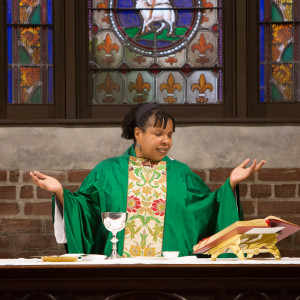
The Rev. Nikki Mathis, T’08, is the rector of St. Gregory the Great Episcopal Church in Athens, Georgia, a position she has held for a little over two years. Mathis says that her vocation hasn’t been changed by the Movement because her experience as a Black woman in the Church has always positioned her to be an advocate for those on the margins. “My proclamation from the pulpit hasn’t changed,” she says. “I speak about the Gospel lens itself to talk about marginalized people. We’re talking about what God is doing in the world on behalf of marginalized people.”
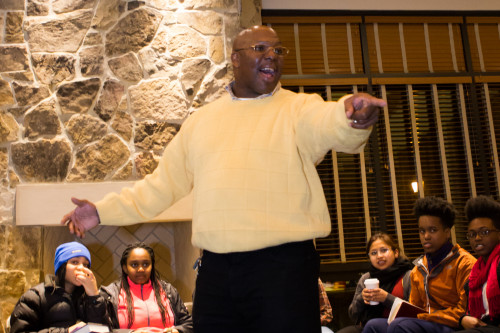
Unlike Mathis, the Rev. Ricardo Sheppard, T’16, began his ministry in the context of the Black Lives Matter movement. “My ministry in The Episcopal Church never changed because by the time I was ordained, the Movement had already been going on.” Sheppard serves as the rector of Church of the Atonement in southwest D.C. He began serving in this role in September 2019. When asked to describe the role of his parish in the Black Lives Matter Movement, Sheppard shared an encounter he had with a protester at Black Lives Matter Plaza in D.C. “We were told to make room for a new generation of activists. I stepped into a parish with a history of activism. Now it’s time for us to show up in new ways.” Sheppard’s observation is an astute one. Many Episcopal congregations tend to be filled with older people who simply cannot show up to protests and to other events in the same way they used to. Even if that were not true, the Black Lives Matter movement arose completely independent of the Church, contrary to the Civil Rights Movement of the 1950s and 60s. Sheppard’s leadership in his Church has centered around discerning how they are called to show up and support the movement as it is now, rather than attempting to make it look like the movement more than 50 years ago.
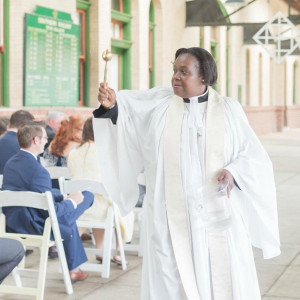
Since leaving Sewanee, the Rev. Mia C. McDowell, T’15, has served in two parishes in the Diocese of Upper South Carolina, a ministry that has proven to be difficult as a Black clergywoman in the midst of the Black Lives Matter Movement. “I feel like I have one foot in the Black church, one foot in the white one, and one foot in the kingdom of God. Being Black in a white church means that we have always had to speak up in ways our white colleagues never had to.” When asked how she addresses those in her congregation who have difficulty supporting the Black Lives Matter movement because they see it as too radical, McDowell invites them to try on a lens of compassion. “I tell them to look at the root. All of these movements have root causes. Black people are tired and angry. Tired of not being heard.” She spoke of the challenge in communicating this message. “I’ve been accused of rationalizing violence,” she said. “I just want people to take a step back and look at the root.” It should be noted that the word “radical” is derived from the Latin word radix, which means “root.”
It is no secret why many people—including many Episcopalians—find it difficult to support the Black Lives Matter movement. Many say that the movement is too radical. They suggest that it loses credibility as a result of the violence and vandalism that has occurred at certain rallies. Others suggest that demands like “defund the police” are too extreme. The challenge for many is a result of the structure of the movement. While the movement has three founders—Alicia Garza, Patrice Cullors, and Opal Tomatei—it has no single group of leaders. Moreover, while there are official chapters around the world, it is a loose confederation of community organizing leaders and groups at best. This type of organizational structure stands in contrast to the Civil Rights Movement of the 1950s and 60s which had a single group of leaders, perhaps its most prominent being Martin Luther King Jr., and a more formal organizational structure.
My first experience with Black Lives Matter was in Kansas City, Missouri, in the wake of Michael Brown’s killing by Officer Darren Wilson. When the Ferguson uprising occurred, I was serving as a priest at St. Andrew’s Episcopal Church in Kansas City, Missouri, a three and a half hour drive down I-70. I saw firsthand how radically different this organization was when compared to Civil Rights organizations I learned about from the 1950s and 60s when I attended a local protest led by local organizers. Modern rallies tended to be more informal and organic, with speakers coming out from whoever happens to show up. This struck me as radically different from what I’ve learned about Civil Rights Movement rallies, which tended to be more formal.
The purpose of this newer structure is to highlight the leadership potential of anyone who wants to be an agent of change in whatever context they may find themselves.
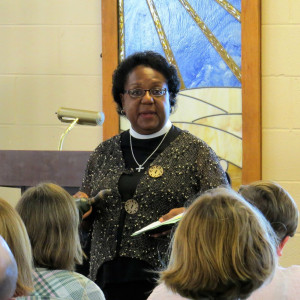
One such leader is the Rev. Dr. Deborah Jackson, T’07, associate dean for community life at the School of Theology. Jackson began her priestly vocation prior to the beginning of the Black Lives Matter movement, but refers to the most recent summer as an inflection point. “The George Floyd murder, occurring in close proximity to the high-profile brutal murders of Ahmaud Arbery and Breonna Taylor, led to such outrage that the seminary’s deans (including me), as well as the seminary’s diversity and reconciliation committee, wrote statements of our commitment to being agents of change.” She also mentioned that “recent events have revealed the extent to which systemic racism continues to shape our national narrative. The two simultaneous pandemics of racism and COVID-19 have exposed how disproportionately and negatively health and economic outcomes often are for people of color.” Jackson, along with others leaders at the School of Theology have seen this as an opportunity to commit to a more robust engagement with antiracism work. “Having a clear understanding of Sewanee’s past through the work of the University’s Roberson Project on Slavery, Race, and Reconciliation, coupled with events of last summer, has poised the School of Theology to commit to a more thorough level of discernment and study about how to best prepare today’s Church leaders to be learned, relevant, and catalysts for change in their future ministry contexts.”
When it comes to The Episcopal Church’s work in this area, it is really work that involves transforming the entire institution. The Episcopal Church is the progeny of the Church of England, a Church historically rooted in a particular brand of whiteness. Kelly Brown Douglas’s Stand Your Ground discusses at length the myth of “Anglo-Saxon exceptionalism” that informs historically white American Protestant churches, going so far as to suggest that at least some of the English Reformation was concerned with “cleansing English Church and society” of anything that wasn’t Anglo-Saxon. Douglas’ book, while attempting to uncover the roots of white supremacy in the United States, also reveals the depth of white supremacy in the Church of England and thus in The Episcopal Church.
This reality explains the emergence of historically Black denominations like the African Methodist Episcopal Church and the African Methodist Episcopal Zion Church, independent Black Baptist congregations like First African Baptist Church in Savanna, Georgia, and separate Black congregations within historically white denominations like St. Thomas’ African Episcopal Church in Philadelphia founded by Absalom Jones, the first Black priest in The Episcopal Church. Black people in the United States carved out space to articulate and share a Gospel that spoke to their needs and dreams rather than receiving a message that only served to buttress the racist status quo. These churches continued to develop of the unique voice of the Black Church born in the crucible of American slavery. Even though Christianity is heavily indebted to North African theologians like Augustine, Tertullian, Athanasius, Syncletica and Theodora of Alexandra, and Origen, the center of the Western Church centered on Europe, and its history was recast in its image. By the time Christianity was used to theologically support the inhumane practice of race-based, chattel slavery, it has ceased to be a faith born out of the experience of poor brown people in Palestine and had instead become the possession and heritage of rich and powerful white people in Europe. This is not to suggest that the entire Western Church operated in a way so obviously opposed to the Gospel. Rather, it is to say that the religion forced upon the enslaved African people who managed to survive the Ma’afa —the unspeakable horror of the Middle Passage—was a far cry from the liberating Gospel of Jesus Christ.
In the face of overwhelming odds, enslaved African people in America undertook a phenomenal feat. Without the support of formal education, on the margins of religious institutions, and often at great risk to themselves and their communities, they began to reinterpret the Christianity of their enslavers. Howard Thurman writes powerfully about this undertaking in his masterful exploration of Negro Spirituals entitled Deep River where he says, “By some amazing but vastly creative spiritual insight the slave undertook the redemption of a religion that the master had profaned in his midst.” (36) These philosophers and theologians in chains spoke and sung powerfully about God’s redeeming work in their midst offering hope to those suffering under the brutality of slavery and a challenge to the dominant social and religious institutions of their own day. Themes like freedom, death, and heaven, theoretical concepts to many white Christians, were embodied experiences for enslaved Africans in America. This powerfully embodied experience of the themes at the heart of the Christian gospel gave rise to what Otis Moss III calls “the blues moan and the gospel shout” of Black preaching—the fundamental quality of Black preaching that astutely names the harsh reality of life while also connecting the current experience of death to the Gospel promise of new life.
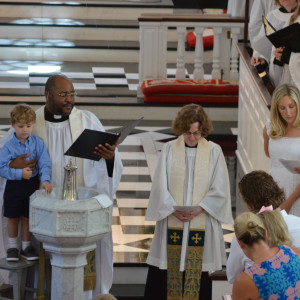
Like many of our Black alumni, the Rev. Joseph Wallace-Williams, T’11, is deeply connected to that tradition of Black preaching but has spent his entire presbyterial ministry in predominantly white spaces. After serving a few years as assistant rector of Grace-St. Luke’s in Memphis, Tennessee, he discerned a called to a monastic vocation and went to live and serve at Holy Cross Monastery in West Park, New York. There he recalls feeling stifled in his preaching even in a monastic setting. After several years in residence at Holy Cross Monastery, Wallace-Williams served a parish in the Diocese of Missouri before being elected to serve as the rector of St. Luke’s and the Epiphany Episcopal Church in Philadelphia, Pennsylvania. Wallace-Williams describes initially struggling to find his authentic preaching voice after the death of Trayvon Martin, where he felt the need to draw upon his Black Church roots while also navigating a historically and predominantly white church experience. As he describes it, he picks up on a theme deeply woven into the Black Church experience, that of religious syncretism: taking pieces from a variety of traditions and experiences and weaving it together into something life-giving, subversive, and transformational. Wallace-Williams talks about drawing on the preaching tradition of the Black Church, the contemplative tradition of monasticism, and his experience navigating historically and predominantly white institutions as having refined his preaching. “My preaching has gotten sharper,” he says. “It’s less in your face and more subtle dropping in of things.”
As Wallace-Williams and I spoke more, I picked up on another theme that was present through the conversations I had with the School of Theology’s Black alumni. Each of us, in one way or another, have had to navigate the complexity of a historically and predominantly white institution. One of the methods for survival that has arisen from this unique experience is code-switching. Code-switching is not a uniquely Black experience. Non-English speakers in America do it in the context of those who speak English. People of color do it with white people. Women do it in male-dominated work places. Code-switching allows historically marginalized communities to navigate the multiple worlds they inhabit. In the context of The Episcopal Church, Black clergy and lay leaders often code-switch depending on the make-up of the room we find ourselves in. We have a message, and we want it to be heard by the communities we lead. It’s the subtle art of theological subversion practiced by enslaved Africans in their spirituals and Jesus Christ in his parables. Among other things, code-switching gives Black clergy and lay leaders the experience of translating between communities. In a time of hyper-polarization and division, the physical and embodied experience of Black people presents many of us with an opportunity to embody the Gospel call to reconciliation. “It’s one of the things I see as part of my vocation,” Wallace-Williams shares. “This is the mantle.”
I felt the weight of this mantle after a “Unite the Right” rally in Charlottesville, Virginia, put the resurgence of white supremacy on full display, complete with assault weapons, Confederate and Nazi paraphernalia, anti-Semitic chants, and torches. Personally, I felt the exhaustion of living in a country where white supremacy is so prevalent, but it takes these extreme events for others to see even a glimpse of it. Within my circle of other Black clergy and white allies, I spoke plainly, venting my anger and sharing how isolated I felt leading a mostly white congregation who simply couldn’t grasp the urgency of this issue in between the events that make the frontpage of the newspaper. With Black members of my congregations, we shared our fears and supported one another. Publicly and in front of my congregation, I preached about the need to dismantle white supremacy, the need to repent of our complicity in it, and the need to persevere in the face of overwhelming odds towards the promise of the Kingdom of God. Navigating difference while embodying difference is exhausting, but it builds bridges in a time when the ties that bind us together seem to be threadbare and fraying.
This unique quality of leadership can be seen in the rapidly shifting demographics of Church leadership. The House of Bishops, while still overwhelmingly comprised of white men is seeing a steadily increasing number of people of color, women, and those who share both identities. It is also true that our current Presiding Bishop Michael Curry, is the first African American to hold the post in the more than 230 years the institution has existed. Sheppard shared how Curry’s leadership has radically shifted the landscape for Black clergy. “He has been a catalyst. He shined a light. He gave us permission to speak in our own voice.” The change in leadership makeup is having a tremendous effect not only the morale of clergy from historically marginalized groups, but the different leadership experience and style is enabling our Church to more fully engage in the hard work of racial justice, healing, and reconciliation.
Even with the amazing leadership being offered to the Church by Black leaders, the work of racial healing, justice, and reconciliation should not fall squarely on the shoulders of Black people, indigenous people, and other people of color. For it to do so is to amplify an underlying assumption of white supremacy: that Black people, indigenous people, and other people of color exist to be exploited by the dominant society. In the words of McDowell, “more white people need to open their mouths.” McDowell shared that she was pleased to see many white Episcopal faith leaders offer a firm voice denouncing racism and police violence, a moment made especially poignant for Episcopalians when the former President of the United States ordered U.S. Park Police and National Guard troops to use tear gas to clear nonviolent protestors out of Lafayette Square thus enabling him to take a photo in front of St. John’s Episcopal Church. “When I saw that…,” McDowell said before taking a deep breath. “Mariann Budde stood up for what was right.” Sheppard, who serves in Budde’s diocese, shared a similar sentiment. “She’s phenomenal! In that moment she said, ‘we will not be silent!’”
It seems then that one of the unique gifts Sewanee has offered Black alumni is a place to learn how to engage with a white church. The Episcopal Church, despite recent efforts to make inroads into immigrant communities and other communities of color is an overwhelmingly white church. Similarly, Sewanee, despite recent and noteworthy efforts to connect to other communities, is an overwhelmingly white institution. It is nothing for which we should be ashamed. For Black individuals looking to serve The Episcopal Church, it means learning to navigate the complexities of an institution with complex and sometimes harmful legacies. “Whether Sewanee knew it or not,” Wallace-Williams recalls, “they taught me how to pastor white people through the anxiety of the dismantling white supremacy.”
Perhaps this ministry is part of the work of clergy in The Episcopal Church at this moment. As Black Lives Matter and other networks of community organizers continue to push our society to recognize the threat white supremacy is, not only to Black well-being and the well-being of other people of color, but to the well-being of white people as well. The dismantling of such an intricately woven structure of oppression and dehumanization will surely bring about anxiety and grief on the part of those who have benefitted knowingly or unknowingly from the system. Anxiety and grief were on full display a few weeks ago when thousands of people stormed the United States Capitol Building in what appeared to be an attempted coup. The group comprised of self-avowed white nationalists, supporters of the Q-Anon conspiracy theories, and supporters of the outgoing president seemed to be united in their belief of what this moment meant. They believed they were fighting for their country; however, if you pull back the layers of what they mean by “country” you will discover that it is a country where whiteness retains unchecked power and privilege. McDowell reflected on the recent violence and attempted coup at the Capitol. “What we see are symptoms of something a lot deeper.”
One of the dangers of dramatic moments, such as the one we witnessed a few weeks ago at the U.S. Capitol, is that because they are so beyond the pale, it becomes easy to dismiss them as anomalies or abnormalities. For white people—all of whom benefit from white privilege—it is easy to point the finger at those who stormed the Capitol and say that they are the ones who need to do the work. The truth is, the world being demanded by Black Lives Matter is a threat to anyone who benefits from the status quo. In that way, Black Lives Matter again steps into the realm of the Biblical Prophets who speak of a world we have not known, one where lions lie down with lambs, where assault weapons become gardening spades, and where those who are hungry or thirsty can eat and drink their fill without having to worry. We all have our work to do to realize this world and it starts by realizing that the one we currently occupy isn’t working for everyone even if it happens to work for us personally.
The call of Black Lives Matter and its community organizers is the creation of a world we’ve not yet seen, one where the assumptions given to whiteness and Blackness no longer diminish the lives of Black people. At the core of the movement is a call for different models of justice, ones that honors the humanity of each person, even and especially those our society sees as expendable. The movement also seeks to reallocate public resources away from broken models of policing and law enforcement and invest those public resources in education, healthcare, and job training in poor communities of color. This world of rehabilitation, dignity, and reconciliation is the same world preached by the prophets and spoken of in the Gospels. The Church should be the champion of this work even if it costs us everything. “For those who want to save their life will lose it,” Jesus says in Matthew 16, “and those who lose their life for my sake will find it.”
If it is true that at least some of the work of The Episcopal Church in the moment is to pastor its congregations through this time in history, then it might behoove us to learn from communities who have long had to pastor their communities through change. When I spoke to some of our Black alumni, this is where many of them shared the greatest sense of hopefulness. Jackson shared that she is “excited and hopeful about The Episcopal Church’s leadership in addressing issues of race and racism, and in providing resources for wide use. I wonder how much more we might lean on those resources. I am also excited that several dioceses have elected bishops over the past few years who are people of color, especially women of color!”
McDowell, who has spent her ministry serving a mixture of predominantly white congregations and smaller, more racially diverse parishes, says “I see two Black men stepping up to serve in my diocese. That makes me hopeful.” Wallace-Williams suggests that one of the things nourishing the Church is the religious experience of Black people who have an embodied sense of how to navigate disruption. “It is Black spirituality, African spirituality, slave spirituality that the Church is benefiting from right now. It gives me hope to see what is happening in the seminaries. It gives me hope to see what his happening in some of the calls being made by parishes.” Sheppard, who serves a historically Black parish in Washington, D.C., also talks about the influence Black leaders are having on the Church as a sign of hope. “The Presiding Bishop. The Vice-Chancellor at the University of the South. That’s what brings me hope.”
The counterpoint to this hope is the need to provide support for your Black leaders and other leaders of color. Mathis, who, in the aftermath of an incident of police violence claimed a space for rest and healing away from her parish with the support of her vestry, spoke movingly about creating resources for Black people, particularly Black women, to grieve and heal. “Black women are always aware that there is no space for us. I looked out there to see what I could find that would speak to us and found nothing. Nothing about lamenting, nothing about wailing, nothing that says ‘Jesus, I’m tired. Jesus, I’m hurt. Jesus, why haven’t you done something about this?’ Our call is to lead people, but you can’t lead and heal deeply, remaining a good steward of your resources at the same time. I can’t tend to you when I’m bleeding. Since I couldn’t find liturgical resources for healing for Black people as a whole, and Black women in particular, I made one which I now use in Black liturgical spaces.” She says that the necessity of the moment gave birth to creativity “as our ancestors have always done.”
For the Church to be a true ally, not simply of the Black Lives Matter movement but for the Black lives in our Church, we must endeavor to be agents of true healing. That means humanizing our leaders, especially our female leaders and our leaders of color who are often expected to bear the burden of reconciliation even while we tend to our own woundedness. Mathis and I also talked about the tendency of The Episcopal Church to jump towards reconciliation liturgies without doing the repenting and healing work first. “These liturgies tend to come from a good place, but they don’t address the deeper issues. They give white people a pass while centering their grief. We want to jump to reconciliation, but we don’t tend to the fact that Black people are wounded. Reconciliation liturgies are earned. We need to do the deeper work of healing first, and that includes giving Black people the space and resources to heal. And white Christians need to do their own learning and repentance work first, and in many cases among themselves. Then we can work together, and then we can do reconciliation.”
The true reconciliation we hope for is a distant hope, but Black Lives Matter is all about hope. The Black Lives Matter movement is teaching us that the road to reconciliation is paved with truth-telling. This movement began outside of the Church, but its message is deeply biblical. From its defense of the oppressed, to its affirmation of fundamental human dignity, to its radically prophetic moral imagination, to its occasional table-flipping, the Black Lives Matter movement calls the United States to account for its treatment of Black people and provides a path forward to true racial healing, one where Black life flourishes. True to its organization structure—a network—it also calls forth partners in this work. For many Black church leaders, lay and ordained, the issues have not been if to partner, but how. Our Black alumni from the School of Theology are leading the way in the parishes and local ministry contexts, in their dioceses, and Churchwide as we continue the work of our ancestors: the redemption of Christianity and the administration of self-care all along the journey. We have much to be thankful for and much work still left to do, but the common theme beneath each of these interviews is the power of community to sustain us for the work that lies ahead. Community. Love. Hope. Reconciliation. That is the stuff underneath the movement, a movement that began with a love letter.
By Marcus George Halley, T15
